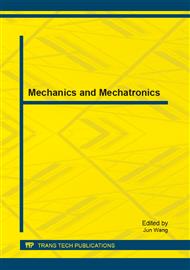p.269
p.273
p.280
p.286
p.292
p.299
p.305
p.310
p.316
Effect of Surface Topography on Contact Property of the End Face for Mechanical Seal
Abstract:
In order to understand the contact property of the end face for mechanical seal, simulation models of the elastic contact area ratio, the elastic-plastic contact area ration and the plastic contact area ratio of the end face are established using fractal parameters to characterize the surface topography. The effects of surface topography fractal parameters of B104a-70 mechanical seal on contact properties of the end faces are analyzed by theoretical simulation. The results show that the elastic contact area ratio increases rapidly at first and then decreases gradually, the elastic-plastic contact area ration decreases rapidly at first and then changes slightly, and the plastic contact area ratio changes slightly at first and then increases gradually with the increases of fractal dimension; the elastic contact area ratio decreases, and both the elastic-plastic contact area ratio and the plastic contact area ratio increase with the increases of the characteristic length scale; the proportion of the elastic contact area is larger, and the proportions of the elastic-plastic contact area and the plastic contact area are smaller when the end face is smooth; there exist an optimal value of fractal dimension between the faces of mechanical seal to make the elastic contact area ratio biggest, and the wear smallest. For B104a-70 mechanical seal, the optimal fractal dimension of the end face of the soft ring is about 1.63.
Info:
Periodical:
Pages:
292-298
Citation:
Online since:
October 2013
Authors:
Price:
Сopyright:
© 2013 Trans Tech Publications Ltd. All Rights Reserved
Share:
Citation:


